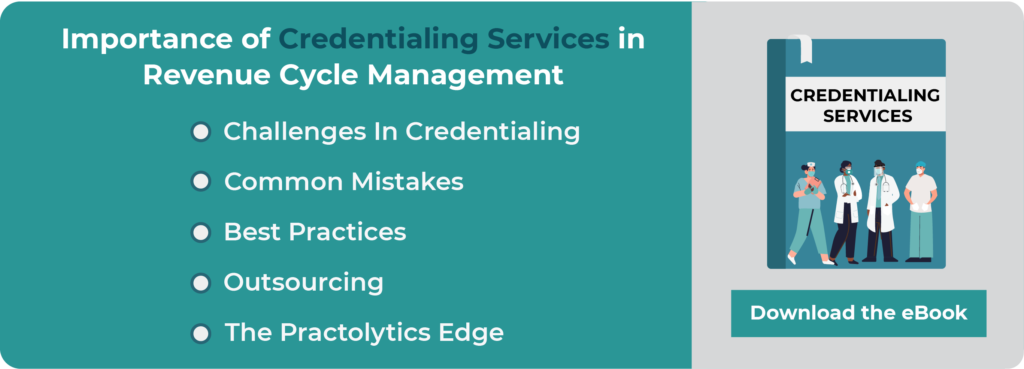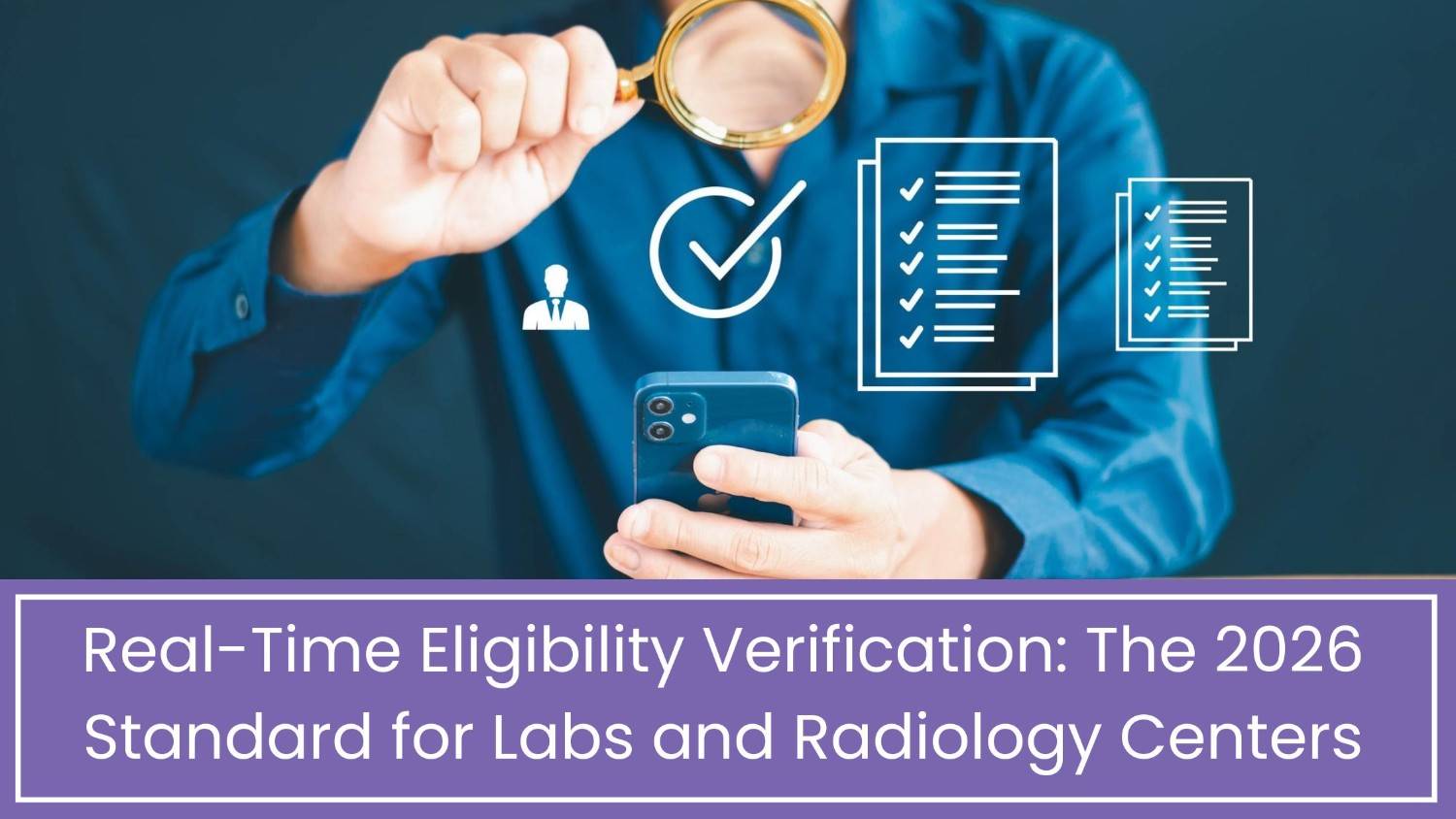How to Ensure All Clinicians Are Credentialed with Major Insurers
How to Ensure All Clinicians Are Credentialed with Major Insurers is essential for maintaining smooth operations and financial stability. Clinicians rely on credentialing to bill insurers, safeguard earnings, and build patient trust. However, delays in credentialing can slow clinic performance, leading to billing errors and revenue loss. This blog explains how to speed up approvals by focusing on major insurers, optimizing CAQH profiles, automating renewals, and organizing clinician data efficiently. Discover proven strategies to prevent rejections, stay compliant with regulations, and see how Practolytics helps healthcare practices achieve faster approvals and simplify the credentialing process with reduced paperwork.
Table of Contents
Ensure All Clinicians Are Credentialed Fast
Getting accepted by major insurance verification companies is essential in today’s healthcare industry. Clinicians cannot bill most insurance plans without it. This entails more paperwork, unhappy patients, and lost revenue. However, the procedure is a bit difficult and time-consuming. This article walks you through the process and demonstrates clever strategies to help your team receive approvals more quickly.
Why Credentialing Matters
Patient access: The majority of patients have insurance. Many patients cannot see your clinicians if they lack credentials.
Revenue security: Claims for non-credentialed clinicians are frequently denied or delayed. Your cash flow suffers as a result.
Credibility: When collaborating with partners or insurers, credentialing fosters trust.
Risk management: Credentials are thoroughly examined by insurers. Errors result in audits or fines.
In summary, credentialing protects your revenue stream and fosters business expansion.
Key Statistics & Trends You Should Know
- Typically, obtaining insurance approval takes 90 to 120 days.
- Errors and missing data are common in more than 85% of applications.
- The resources and time required to credential one provider range from $7000 to $8000.
- By 2030, there will be a 23 percent increase in demand for credentialing specialists.
- Monthly license and sanction checks will be required under new regulations in 2025.
- Despite increasing automation, many groups continue to use manual processes.
These facts demonstrate that credentialing is expensive, urgent, and essential to manage effectively.
Challenges
Inconsistent documentation
Outdated or missing insurance, resumes, or licenses frequently cause delays, rejections, and denials.
Payer differences
Each insurer has unique forms and rules. Credentialing for Insurer A won’t work for Insurer B.
Scaling challenges
For groups with many clinicians, handling credentials one-by-one is slow and risky.
Staffing issues
Credentialing teams face turnover, shortages, and urgent distractions.
Maintaining credentials
Licenses expire, and rules change. Monthly checks are now common.
Manual processes
Spreadsheets or disparate systems may cause errors and overlaps.
Step-by-Step: How to Ensure All Clinicians Get Credentialed
Below is a straightforward plan for credentialing clinicians effectively:
1. Organize Clinician Details
Names, specializations, license numbers, and states, NPIs, training, certifications, and previous enrollments should all be kept on a master list.
Identify any missing items: Look for any missing information, such as insurance documents, or gaps, such as expirations.
Use consistent formats: standard CV templates, consent forms, and checklists.
Store securely: Keep everything in one central system—no scattered files.
2. Use CAQH / Central Credentialing Services
Many insurers use CAQH ProView. It’s a central place where clinicians can update their details once for many insurers.
Ensure all clinicians complete their CAQH profiles. Re-attest regularly and allow insurer access.
This saves time by avoiding repeated data entry with every insurer.
3. Prioritize Which Insurers First
Analyze your doctor’s patient types and where they come from. Focus first on big insurers that send you the most patients.
Find your key doctors, like specialists, and make sure they’re approved by important insurers first.
4. Submit Applications with Care
For each insurance company, follow their sign-up steps: complete their forms, see if they need new providers, and check panel openings.
Keep every application’s reference number. You’ll need it to track progress or follow up later.
Answer insurer questions fast. If they ask for more papers, send them quickly. Waiting slows everything down.
5. Contracting & Fee Setup
After checking your credentials, the insurer sends your contract. It lists your pay rates, covered services, and start dates.
Action: Review every detail. Push for better rates or terms if you can.
6. Enrollment & System Activation
Once signed, confirm you’re marked “in-network” in the insurer’s directory.
Action: Update your medical billing tools with the new payer IDs, contract type (group/solo), and start dates to avoid claim errors.
7. Monitor & Renew Credentials Regularly
Every two to three years, or even more frequently, many health plans require appropriate updates. According to NCQA regulations, starting in July 2025, there will be monthly checks for SAM.gov status, licenses, sanctions, and disciplinary actions. Create dashboards and alerts to monitor due dates.
8. Use Automation Tools
Adopt credentialing software that auto-sends reminders, checks documents, tracks progress, and flags issues.
Connect it to HR/EHR systems so staff changes (like new licenses) sync instantly.
Analyze data to find delays and improve efficiency.
Emerging Updates, Trends & What to Watch
- Tighter NCQA rules hit in 2025: Faster checks needed, more often.
- Digital tools now auto-check credentials and spot issues fast.
- Some platforms test blockchain for fraud-proof records.
- Delays in credentials hurt: revenue declines, patients wait, and clinicians wait.
- Staffing issues: There is a high turnover rate and a lack of teams.
- The telehealth boom means multi-state checks get messy.
- Get ahead: Plan now, build systems that grow.
Best Practices & Tips
- Establish reasonable deadlines: Anticipate delays—allow 90+ days for each insurer.
- Keep track of everything: Track the credentialing status of each clinician using dashboards.
- Stay proactive: Check updates regularly and act fast on replies.
- Educate clinicians: Explain their role—renew licenses, update CVs, and insurance.
- Build backups: Train multiple staff so absences don’t stall progress.
- Review and refine: After each cycle, fix delays by improving workflow.
- Think about outsourcing: A lot of teams rely on medical credentialing services to help them.
Final Words
Getting your clinicians approved by insurers matters. Delays hurt: claims get denied, money is lost, patients get upset, and rules get broken. Fix this by checking clinician details, using CAQH tools, focusing on key insurers, automating steps, and tracking rule changes. This builds a strong system that grows with you.
Need help? Practolytics handles approvals across your team. We manage paperwork, track progress, and keep things moving so you focus on patients—not forms. We’ll cut delays, speed up enrollment, and get every clinician paid fairly. Talk to Practolytics today—we make approvals simple.
Talk to Medical Billing Expert Today — Get a Free Demo Now!






